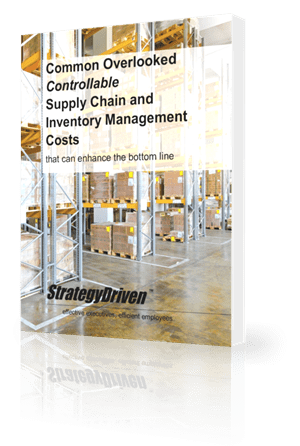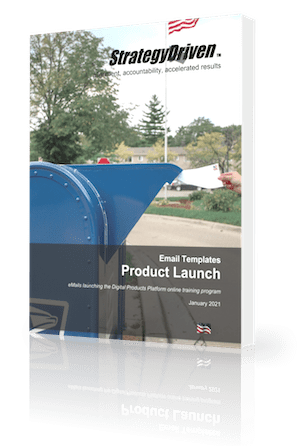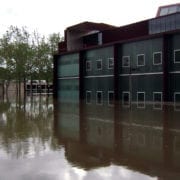The Big Picture of Business: Leadership for the New Order of Business Part 1
Just as companies have books of business and corporate cultures, so do individuals, who in turn populate and influence organizations. Last month, there were two of my columns on defining and recognizing what contributes to a Body of Work. The first used the analogies Fine, Aged Cheese and Valuable Antiques. The second looked through the analogies and focused upon business strategies and methodologies.
I’m taking the same two-phase approach this month. This column looks through the prism of music and salutes the famed composer Burt Bacharach as the analogy for a fine, rich and definitive Body of Work. Next week’s follow-up takes it back to business and includes most of the great lessons of life that I successfully learned and applied.
At the beginning of my career, I was a radio DJ. I started in 1958, a golden period for music. Because Payola was looming as an issue in our industry, we were required to keep logs of the songs that were played, containing the labels on which they appeared, the names of the composers and other information. In today’s industry, that would all be on spreadsheets. However, the manual writing of spreadsheets gave us the chance to digest and learn from the information, developing the skills to better program for our audience. To this day, I can look at the label of a record and, judging by the serial number, can tell you its date of release.
A bunch of records were in the Top 40 at that time: ‘Magic Moments’ by Perry Como, ‘Story of My Life’ by Marty Robbins, ‘The Blob’ by the Five Blobs, ‘Another Time Another Place’ by Patti Page and ‘Hot Spell’ by Margaret Whiting. I zeroed into the fact that the music composer of all these diverse hits was Burt Bacharach, though the lyricists were different names.
It occurred to me that this was a talent to watch, as I was already familiar with established composers such as George Gershwin, Cole Porter, Irving Berlin and others. I sensed early-on that Bacharach would belong in that upper echelon on Tin Pan Alley icons. Concurrently, I became familiar with the work of other young emerging music composers, such as Carole King, Buddy Holly, Paul Anka, Barry Mann, Neil Sedaka, John Lennon and Paul McCartney.
Throughout the 1960’s, the music of Burt Bacharach and lyricist Hal David was everywhere. In the rock era, there were still hits and radio airplay for easy listening music, ballads, movie title songs and the like. The playlists were balanced and gave the public a full array of musical styles.
One could spot a Bacharach tune because it had a definable style. Bacharach himself played piano on and conducted many of the important hits. His arrangements fit the performers and needs of each piece. Yet, the hits had identifiable traits of a Bacharach production. Many talented artists wanted to record his songs, with his arrangements. The public sought out recordings with his hits. All of that represents Body of Work for a composer.
Through the 1960’s, Bacharach broadened and experimented in creative directions. There was a Broadway show, a TV musical revue, movie soundtracks and movie tie-in tunes. He hosted TV specials and performed concerts of his music.
In the decades of the 1980’s, 1990’s and 2000’s, newer fans and younger generations kept discovering Burt Bacharach. His old songs spoke to them, were updated and re-recorded. He collaborated with other musical talents (Elvis Costello, Carole Bayer Sager and James Ingram). Every decade, he kept getting rediscovered and re-recorded. There were tribute concerts and retrospectives. The Body of Work stood the test of time and appealed to wider audiences.
With the renewed interest in Burt Bacharach came the reissues of recordings. With the popularity of CDs came the retrospectives of his early work. Being a Bacharach fan, I acquired the compilations and fell in love with a whole new earlier Body of Work.
There were songs that I had played on the radio but had not realized that they were by Burt Bacharach. These included ‘You’re Following Me’ by Perry Como, ‘Be True to Yourself’ by Bobby Vee, ‘Keep Me in Mind’ by Patti Page, ‘Heavenly’ by Johnny Mathis, ‘Take Me to Your Ladder’ by Buddy Clinton, ‘Along Came Joe’ by Merv Griffin, ‘Mexican Divorce’ by The Drifters, ‘The Night That Heaven Fell’ by Tony Bennett, ‘Blue on Blue’ by Bobby Vinton and ‘Don’t You Believe It’ by Andy Williams.
Then came the motherlode. I started discovering all those songs from Bacharach’s early Body of Work that I had never heard before. As a Bacharach fan since 1958, I found myself in the same company as the younger music fans who have discovered his work and found relevance to their contemporary lives.
My own personal favorites from these compilations (highly recommended that you hear, buy and download) include:
- ‘I Looked For You’ by Charlie Gracie.
- ‘Too Late To Worry’ by Babs Tino and Richard Anthony.
- ‘Long Day, Short Night’ by The Shirelles, Dionne Warwick and Dawn Penn.
- ‘With Open Arms’ by Jane Morgan
- ‘Sittin’ in a Treehouse’ by Marty Robbins
- ‘The Answer to Everything’ by Sam Fletcher
- ‘Thirty Miles of Railroad Track’ by the Hammond Brothers
What I found in these musical gems was magical. Many of those songs stood on their own merits, serving the needs of the performers at the time. They served as building blocks for what became the definitive Bacharach sound.
That is the way that I am with business wisdom. I continually dust off old chestnuts and reapply them for clients, in my books, through my speeches and in sharing with mentees. The case studies become the substance of what we provide future clients. We benefit from going back and learning from our own early Body of Work, assuming that we strategized our career to be a long-term thing, as Burt Bacharach did.
Everything we are in business stems from what we’ve been taught or not taught to date. A career is all about devoting resources to amplifying talents and abilities, with relevancy toward a viable end result. Failure to prepare for the future spells certain death for businesses and industries in which they function.
I’ll close by adding business analogies to some Burt Bacharach song hits:
- ‘A House Is Not a Home’ – Organizations do not come with corporate cultures. They have to be nurtured. That’s the subject of Chapter 6 in my book, The Business Tree.
- ‘Walk On By’ – Just because it is available business does not mean it is the best available. Go beyond the low-hanging fruit.
- ‘There’s Always Something There to Remind Me’ – Go back through your old files. Uncover what inspired you in the first place. It becomes the beacon toward your future.
- ‘Errand of Mercy’ – People can speak on your behalf and should be encouraged to do so. That does not absolve you from authoritatively stating your own case.
- ‘They Long To Be Close To You’ – Success breeds more success. That signals the need to weed out those who will take unfair advantage. Some networkers are users.
- ‘Odds and Ends of a Beautiful Love Affair’ – Go back and examine your company’s strengths, weakness, opportunities and threats.
- ‘What the World Needs Now’ – Ethics and social responsibility must be parts of the business strategy.
- ‘Knowing When to Leave’ – The way that we end business relationships is just as important as the manner in which they begin.
- ‘Don’t Make Me Over’ – Branding is NOT strategy. Every way in which a company markets must be commensurate and fit under definable business strategies.
- ‘That’s Not the Answer’ – When consultants peddle ‘solutions,’ that’s a vendor term for what they have to sell. Companies need to determine what they, and real business advisers will get them to that awareness.
- ‘There Goes the Forgotten Man’ – If someone is identified by one job, then that’s not a Body of Work.
- ‘Any Day Now’ – Perseverance pays off. That’s how businesses survive and go to the next plateau.
- ‘My Little Red Book’ – Having a network of friends and resources is important.
- ‘The Windows of the World’ – We are a global economy and must learn the business protocols of others. Going global is essential, and there are nuances to its effectiveness.
- ‘Arthur’s Theme, Best That You Can Do’ – Employees should be encouraged to be their best. Empowered work teams are more valuable to the organization. Effective leaders encourage people to be their best, and it will benefit the company. That’s the subject of Chapter 7 in my book, The Business Tree.
- ‘Living Together, Growing Together’ – Collaborations, partnering and joint-venturing are the most important new trend in business. That’s the subject of Chapter 8 in my book, The Business Tree.
- ‘That’s What Friends Are For’ – Category 6 on my Business Tree looks at forces outside your company that can profoundly affect the climate in which you do business. Learn how to identify and nurture your stakeholders.
- ‘Loneliness Remembers What Happiness Forgets’ – We learn three times more from failure than success. Learning from failures is how successful strategies are built. That’s the subject of Chapter 9 in my book, The Business Tree.
- ‘Overnight Success’ – Learn to go the distance. Most overnight successes reflect many years of dues-paying.
- ‘Turn On Your Heartlight’ – When the company functions at its best, then it continues setting higher sites. Organizations in the right business for the right reasons tend to practice continuous quality improvement. That’s the subject of Chapter 10 in my book, The Business Tree.
A rich and sustaining Body of Work results from a greater business commitment and heightened self-awareness. None of us can escape those pervasive influences that have affected our lives, including music and the messages contained in songs. Like sponges, we absorbed the information, giving us views of life that have helped mold our business and personal relationships.
About the Author











Leave a Reply
Want to join the discussion?Feel free to contribute!